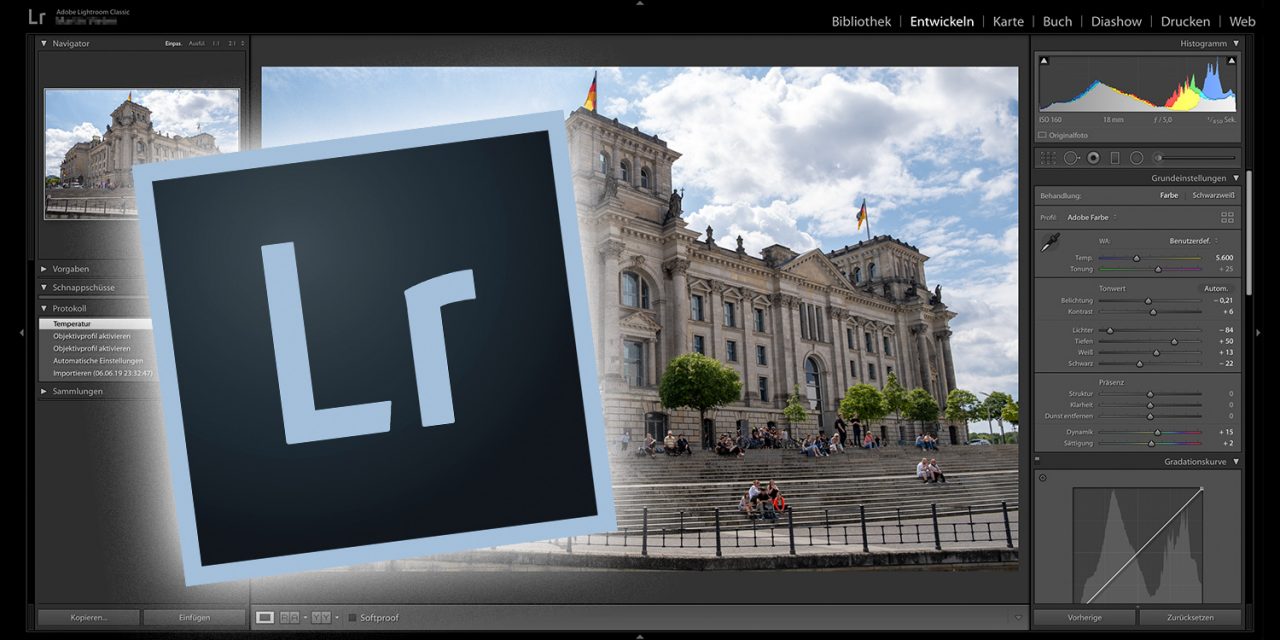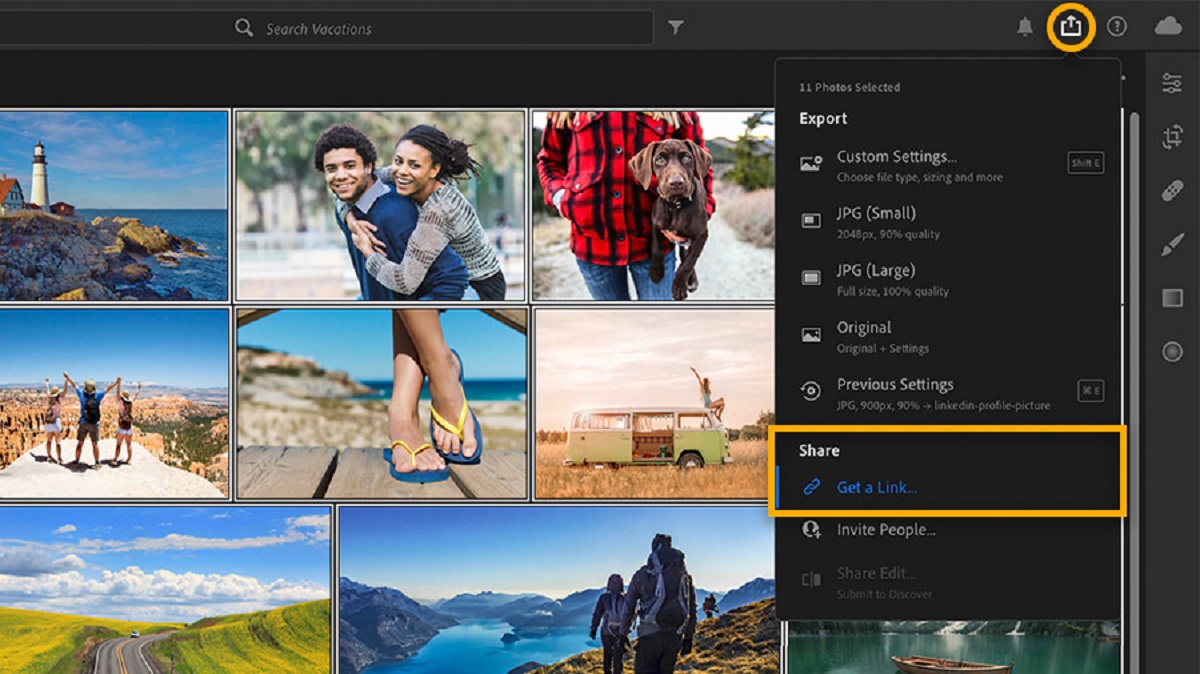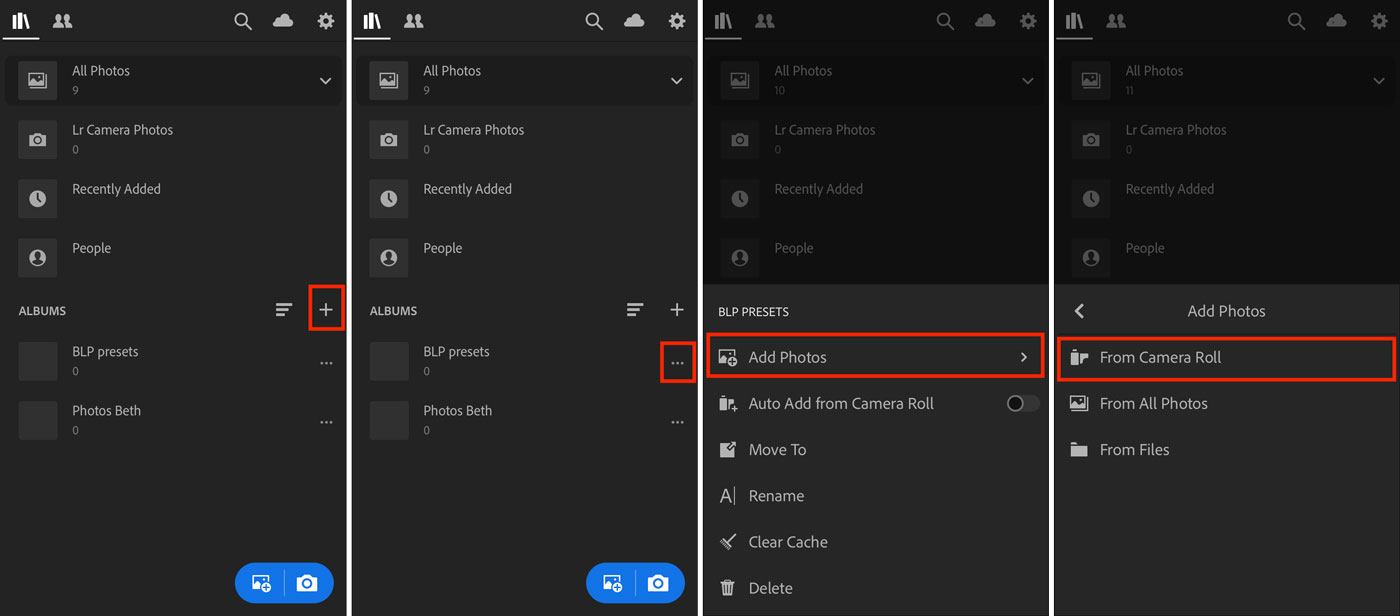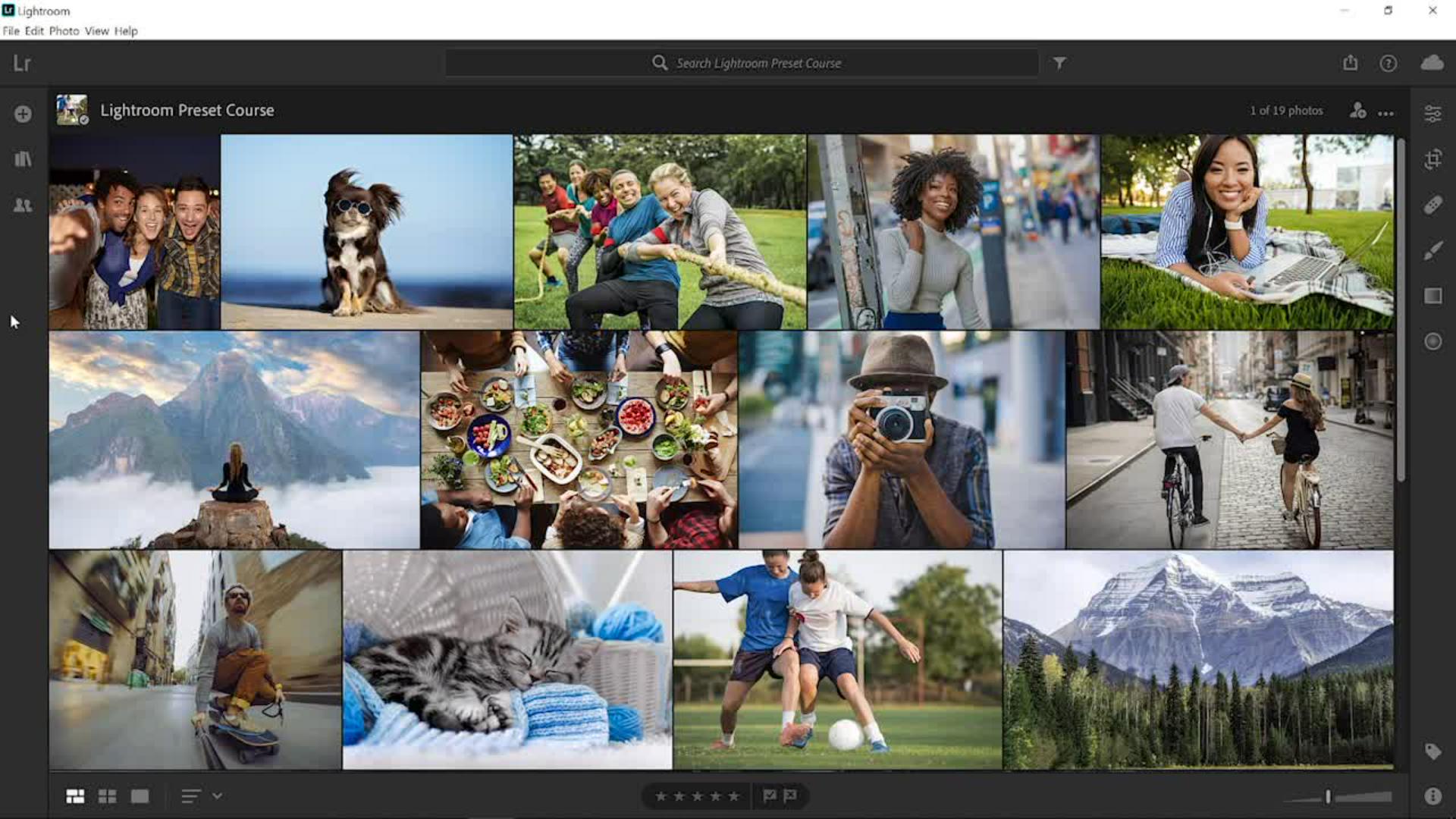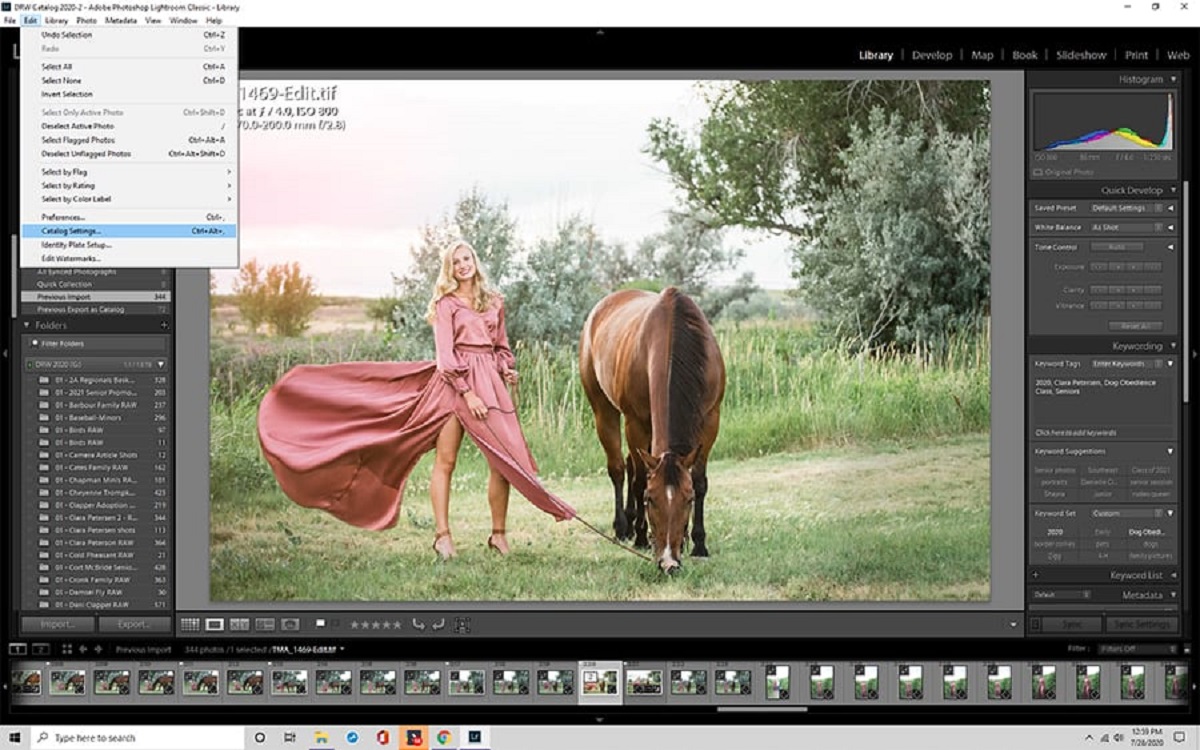Introduction
Welcome to the world of Lightroom! If you’re passionate about photography and want to take your editing skills to the next level, Adobe Lightroom is the perfect tool for you. With its comprehensive features and intuitive interface, Lightroom offers a professional-grade editing experience that can transform your average photos into stunning masterpieces.
Lightroom is widely recognized as one of the leading photo editing software, trusted by photographers and enthusiasts alike. It provides powerful editing tools, advanced presets, and a range of organizational features that streamline your workflow and help you achieve your desired results with ease.
In this guide, we will walk you through the steps to download and install Lightroom on your computer. Whether you’re using Windows or Mac, the process is straightforward, and you’ll be up and running in no time.
But why should you choose Lightroom over other photo editing software options? One of the biggest advantages of Lightroom is its integration with Adobe Creative Cloud, which allows you to access your photos and edits from anywhere, on any device. This cloud-based approach ensures that your work is always in sync, whether you’re editing on your computer or making quick adjustments on your smartphone.
Moreover, Lightroom’s non-destructive editing workflow ensures that your original photos remain untouched, giving you the freedom to experiment and make changes without worrying about losing any valuable data. You can always revert to the original image or undo specific edits, which gives you the flexibility to refine your creative vision.
Another standout feature of Lightroom is its extensive range of presets and profiles. These pre-designed settings enable you to apply consistent and professional-looking edits to your photos with just a single click. Whether you’re going for a moody, vintage look or a vibrant and saturated style, Lightroom has a preset to suit every mood and aesthetic preference.
So, if you’re ready to unleash your creativity and take your photo editing skills to new heights, let’s dive into the step-by-step process of downloading and installing Lightroom on your computer.
Step 1: Go to the Adobe website
The first step in downloading Lightroom is to visit the official Adobe website. Open your preferred web browser and type in www.adobe.com in the address bar. Press Enter, and you’ll be directed to Adobe’s homepage.
Once you’re on the Adobe website, take a moment to explore the different products and services they offer. Adobe offers a wide range of software applications tailored for various creative needs, including graphic design, video editing, and of course, photography.
When you’re ready to proceed with Lightroom, locate the search bar on the Adobe website. Type in “Lightroom” or “Adobe Lightroom” and hit Enter. This will direct you to Lightroom’s product page, where you can find more information about the features and pricing options.
Before downloading Lightroom, consider whether you want to start with the free trial or go straight to a subscription plan. The free trial allows you to explore Lightroom’s capabilities for a limited time without any commitment. If you’re unsure about investing in the software just yet, this is a great opportunity to test it out and see if it meets your editing needs.
If you’re ready to unlock the full potential of Lightroom, you can choose from a variety of subscription plans offered by Adobe. These plans often include other Adobe applications as well, such as Photoshop, which can further enhance your creative workflow.
Once you’ve decided on the best option for you, it’s time to move on to the next step. In the upcoming section, we will guide you through the process of accessing the Lightroom download and installing it on your computer.
Step 2: Click on the “Free Trial” button
After landing on Lightroom’s product page, the next step is to locate the “Free Trial” button. This button will allow you to download a fully functional version of Lightroom and try it out for a limited period of time.
The location of the “Free Trial” button may vary depending on the layout of the webpage, but it is usually prominently displayed on the product page or in the top navigation menu.
Take a moment to carefully look for the button, as there may be additional offers or subscription options available on the same page. Make sure you click on the “Free Trial” button specifically to initiate the download process.
Clicking on the “Free Trial” button will redirect you to a new page, where you will be prompted to provide some information before proceeding with the download. This information typically includes your name, email address, and country of residence.
Fill out the required fields with accurate information. Providing a valid email address is essential, as Adobe will send you a confirmation email with instructions and further details about your free trial.
Once you’ve entered your information, carefully review the terms and conditions of the free trial. It’s important to understand the limitations and restrictions of the trial period, such as the duration and available features.
If you agree to the terms and conditions, click on the “Start free trial” or similar button to initiate the download. Depending on your internet connection speed, the download may take a few minutes.
During the download process, it’s important to avoid closing the browser window or interrupting the connection. Doing so may result in an incomplete download, and you’ll have to start the process again from the beginning.
Once the download is complete, you’re one step closer to experiencing the power of Lightroom. In the next section, we’ll guide you through the process of signing in or creating an Adobe account to proceed with the installation.
Step 3: Sign in or create an Adobe account
To proceed with the installation of Lightroom, you will need to sign in to your Adobe account or create a new one if you don’t have an existing account. An Adobe account is necessary to access and manage your Adobe software subscriptions and licenses.
If you already have an Adobe account, click on the “Sign In” or “Log In” button typically located on the top right corner of the webpage. This will prompt you to enter your email address and password associated with your Adobe account.
If you don’t have an Adobe account yet, click on the “Create Account” or “Get Started” button. This will redirect you to a registration page where you’ll need to provide your name, email address, and create a password for your Adobe account.
Ensure that you enter a valid email address as Adobe will send important communication regarding your account and software updates to this email. It’s also advisable to create a strong and unique password to protect your account and personal information.
After filling in the required information, review the terms and conditions and privacy policy of Adobe. It’s essential to understand and agree to these terms before creating your account.
Once you’ve completed the necessary steps, click on the “Create Account” or similar button to finalize the account creation process. Adobe may require you to verify your email address by sending a confirmation email. Follow the instructions in the email to complete the verification process.
Now that you have a verified Adobe account, you’re ready to proceed with the installation of Lightroom. In the next section, we’ll guide you through the steps to choose the appropriate operating system for your computer.
Step 4: Choose your operating system
Now that you have signed in or created your Adobe account, it’s time to select the appropriate operating system for your computer. Lightroom is available for both Windows and Mac platforms, ensuring compatibility with a wide range of devices.
On the Lightroom product page, you will typically find buttons or tabs labeled “Windows” and “Mac” indicating the different versions available. Click on the button or tab that corresponds to your operating system.
If you are using a Windows computer, click on the “Windows” button to access the Lightroom download tailored for this platform. Similarly, click on the “Mac” button if you are using an Apple computer running macOS.
Make sure to double-check that you have selected the correct version for your operating system. Attempting to install Lightroom on an incompatible OS can lead to compatibility issues and may prevent the software from running smoothly.
Once you’ve selected the appropriate operating system, the webpage will display a download button specific to the version you selected. Click on the download button to initiate the download process.
Keep in mind that the download size may vary depending on your internet connection speed and the version of Lightroom you are downloading. It is advisable to have a stable internet connection to avoid any interruptions during the download.
While the download is in progress, refrain from closing the browser window or interrupting the connection. Doing so may result in an incomplete download, and you’ll have to start the process again from the beginning.
Once the download is complete, you’re ready to move on to the next step: the installation of Lightroom. In the upcoming section, we’ll guide you through the process of installing Lightroom on your computer, regardless of your operating system.
Step 5: Start the download
Now that you have chosen the appropriate operating system, it’s time to start the download of Adobe Lightroom. This step will begin the process of transferring the software to your computer, so you can start experiencing its powerful features.
After selecting your operating system and clicking on the download button, your web browser will prompt you to choose a location on your computer to save the Lightroom installer file. You can choose any convenient location or use the default download folder.
Once you’ve chosen the download location, click “Save” or “OK” to start the download. The duration of the download will depend on the size of the installer file and the speed of your internet connection.
While the download is in progress, it’s important to refrain from closing your browser or interrupting the internet connection. Doing so may result in an incomplete download, requiring you to start the process again.
If you encounter any issues or the download is interrupted, check your internet connection first. Ensure that you have a stable and reliable connection before attempting to download Lightroom again. In some cases, clearing your browser cache or using a different web browser may also resolve any download-related issues.
Once the download is complete, you can proceed to the next step – installing Lightroom on your computer. In the following section, we’ll guide you through the installation process, whether you’re using Windows or Mac.
Step 6: Install Lightroom
With the Lightroom installer file successfully downloaded to your computer, it’s time to proceed with the installation process. Installing Lightroom is a straightforward process, and this step will guide you through the installation, regardless of whether you’re using Windows or Mac.
Locate the Lightroom installer file that you downloaded in the previous step. The file is typically saved in your computer’s default download folder or the location you specified during the download process. Double-click on the installer file to begin the installation.
A dialog box might appear, asking you to confirm that you want to run the installer. Click “Yes” or “Run” to proceed with the installation process. This will launch the Lightroom installer wizard.
The installer wizard will guide you through a series of steps to install Lightroom on your computer. Read and review the information presented on each screen carefully. When prompted, make any necessary selections or adjustments according to your preferences.
Accept the license agreement by checking the box or clicking the appropriate button. This indicates that you agree to the terms and conditions set forth by Adobe. Without accepting the agreement, you will not be able to proceed with the installation.
Choose the installation location for Lightroom. The default installation path is usually in the Program Files directory for Windows or the Applications folder for Mac. You can choose a different path if you prefer, but it’s recommended to keep the default setting.
Once you’ve made all the necessary selections and adjustments, click “Install” or “Next” to begin the installation process. The progress of the installation will be displayed, and it may take a few minutes to complete.
During the installation process, avoid exiting or interrupting the process. Doing so may result in an incomplete installation or system errors. Wait patiently until the installer notifies you that the installation is complete.
With the installation successfully finished, you’re now ready to move on to the final step – activating Lightroom. In the next section, we’ll guide you through the activation process, allowing you to start using Lightroom and explore its full potential.
Step 7: Activate Lightroom
After installing Lightroom on your computer, the final step is to activate the software. Activation ensures that you have a valid license to use Lightroom and allows you to access all of its features and functionalities.
When you open Lightroom for the first time after installation, you’ll be prompted to sign in with your Adobe ID. This is the same email address and password you used to create your Adobe account in a previous step.
Enter your Adobe ID credentials and click “Sign In” to proceed. Lightroom will verify your account information and activate your software. This process requires an internet connection, so make sure you’re connected to the internet before proceeding.
If your Adobe ID is successfully authenticated, Lightroom will activate automatically. You may see a progress bar or a message indicating that activation is in progress. Once the activation is complete, Lightroom is ready to use.
If you encounter any issues with the activation process, ensure that your internet connection is stable. Also, verify that you’ve entered the correct Adobe ID and password. You can reset your Adobe ID password if needed.
Some versions of Lightroom may require you to enter a license key or serial number to activate the software. If that’s the case, locate the license key that was provided to you during the purchase process or check your Adobe account for the serial number.
Enter the license key or serial number in the designated field or when prompted during the activation process. Follow the on-screen instructions to complete the activation.
Once Lightroom is successfully activated, you’re ready to unleash your creativity and start exploring the world of photo editing. Familiarize yourself with the interface, experiment with the different tools and features, and begin your journey to capturing and enhancing stunning photographs.
Remember to regularly check for updates and new features that Adobe releases for Lightroom. Keeping your software up to date ensures that you have access to the latest improvements and enhancements for an optimal editing experience.
Congratulations! You have now successfully downloaded, installed, and activated Lightroom on your computer. Enjoy the journey of creating captivating images and bringing your artistic vision to life.
Conclusion
Congratulations on successfully completing the steps to download, install, and activate Adobe Lightroom on your computer! You are now equipped with a powerful photo editing tool that will elevate your photography to new heights.
Lightroom offers a comprehensive set of editing features, advanced presets, and organizational tools that streamline your workflow and help you achieve stunning results. Whether you’re a professional photographer or an enthusiastic hobbyist, Lightroom provides the perfect platform to enhance and showcase your creativity.
Throughout this guide, we explored the process of downloading Lightroom, signing in or creating an Adobe account, choosing your operating system, starting the download, installing the software, and activating it. By following these steps, you have gained access to one of the industry’s leading photo editing software.
As you embark on your Lightroom journey, take advantage of the numerous resources available. Adobe provides tutorials, forums, and online communities where you can expand your knowledge, learn new techniques, and connect with other photographers.
Remember to keep your Lightroom software updated. Adobe regularly releases updates and new features that enhance the user experience and offer additional editing capabilities. Staying up to date ensures that you have access to the latest tools and improvements.
Experiment with Lightroom’s vast array of editing options, from basic adjustments like exposure and contrast to more advanced techniques like selective editing and local adjustments. Explore the wide range of presets and profiles available, or create your own to achieve consistent and personalized edits with ease.
Organize your photos using Lightroom’s catalog and collections system, enabling you to easily manage and search for images. Take advantage of metadata and keywording features to add relevant information and make your photo library searchable and organized.
Whether you’re editing a single image or working on a large photo project, Lightroom’s non-destructive editing workflow ensures that your original photos remain untouched, allowing you to experiment and refine your creative vision without worry.
Now that you have the knowledge and tools to navigate Adobe Lightroom, unleash your creativity and explore the endless possibilities of photo editing. Capture breathtaking images, express your artistic vision, and enjoy the process of bringing your photos to life with Adobe Lightroom.







